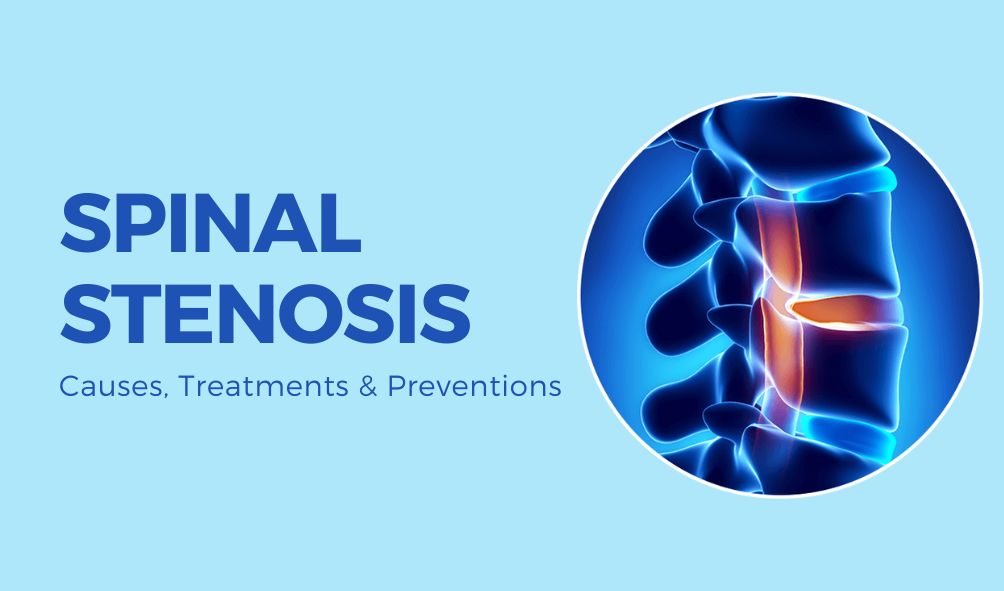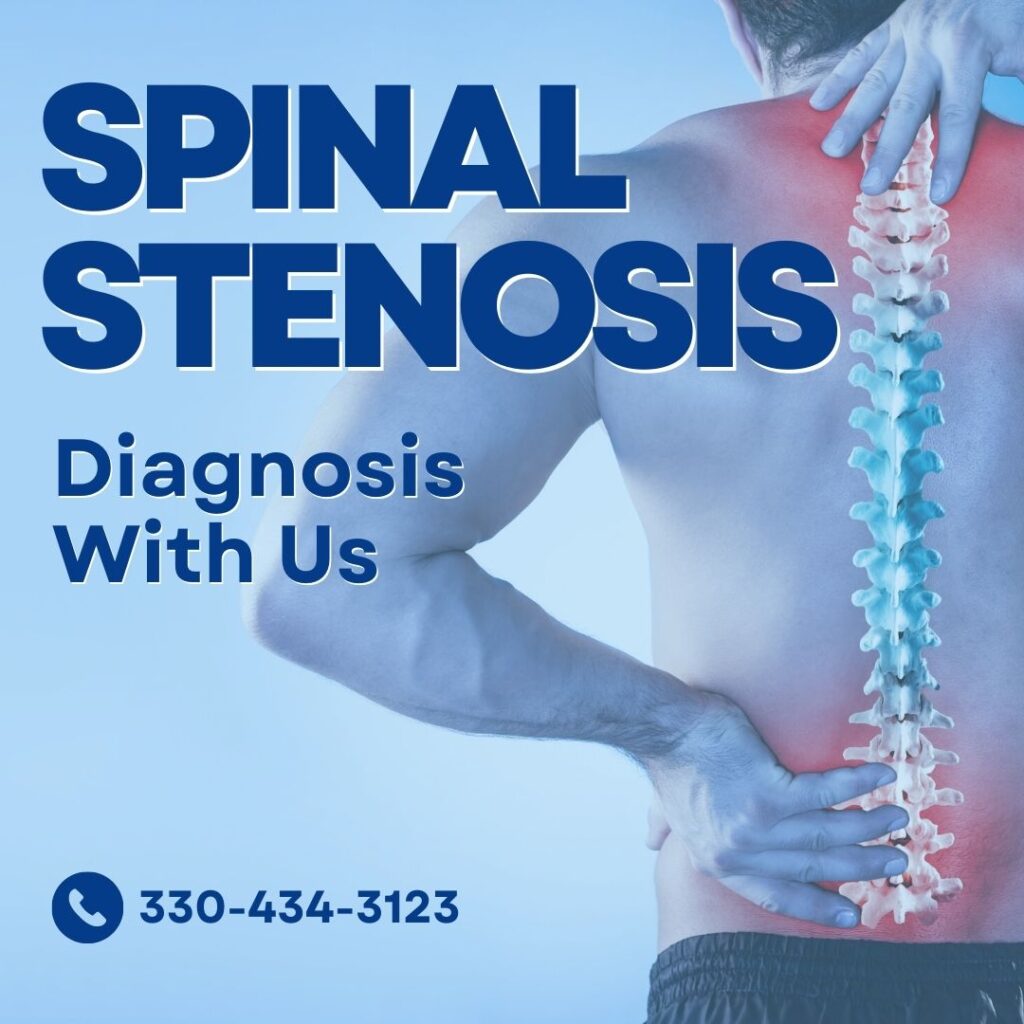
Overview
Spinal stenosis is a narrowing of the spinal canal that can place pressure on the spinal cord and nerves. This condition can lead to pain, numbness, and weakness in the legs and back. If you are experience pain or other symptoms associated with spinal stenosis, be sure to consult your doctor for an accurate diagnosis and appropriate treatment plan. In this article, we’ll discuss what causes spinal stenosis and how it’s treated.
Causes of Spinal Stenosis
It is a common condition that can cause pain in the back and legs. It occurs when the space around the spinal cord narrows, putting pressure on the nerves. This can be caused by several things, including aging, injury, and genetics. In some cases, it can be treated with therapies, medication or surgery. But in many cases, people with spinal stenosis simply have to learn to live with the pain.
Symptoms of Spinal Stenosis
A. Numbness and Tingling
Spinal Stenosis often manifests itself through the feeling of numbness and tingling in the arms, hands, back and legs. This can be caused by either direct irritation or compression of the nerve roots along the spine or indirectly due to inadequate blood supply from other parts of the body. Other symptoms include aching, burning pain with walking or standing, weakness in your arms or legs, stiff spine muscles, and difficulty bending forward. Nerve damage can lead to numbness in parts of your extremities as well as persistent muscle spasms. In case of severe symptoms, many sufferers experience bladder and bowel problems due to partial paralysis that stops nerves connections to your brain.
B. Weakness in Legs
Weakness in the legs is one of the most common signs of spinal stenosis – it often feels like the legs are too weak to support the individual when attempting to stand up or walk long distances. In certain cases, this kind of weakness can be severe enough to require a walking aid or leave individuals unable to perform activities they used to do without difficulty. Fortunately, there are ways to manage spinal stenosis through physical therapy and lifestyle adjustments. Early detection and treatment by a medical provider is important for managing symptoms and avoiding permanent damage.
C. Pain in Back or Neck
Pain in the back or neck is a condition that affects the spinal cord and nerve roots. It may also become more intense when walking, standing for prolonged periods, or even just sitting. Symptoms of this condition can sometimes be temporarily relieved through rest and lying down. However, if left untreated, spinal stenosis can cause chronic discomfort and disability that can significantly impact quality of life.
D. Difficulty in Walking or Standing Long Period
Difficulty in walking or standing for long periods is one of the most common symptoms, as well as sensations such as numbness, tingling, or burning pain traveling down the legs. Although rest may relieve these issues, many people are met with discomfort when engaging in activities like running or sports. Other signs of spinal stenosis include loss of bladder or bowel control and difficulty controlling muscles that help balance and maintain posture. If you believe you are experiencing any of these symptoms, it’s important to see your doctor for a comprehensive evaluation.
Diagnosis of Spinal Stenosis
A. Physical Examination
Diagnosis of spinal stenosis often begins with a physical examination. Physical examiners may ask a patient questions to identify possible issues, as well as to observe their movements and posture. Some doctors may employ advanced imaging techniques such as myelography or nerve conduction studies for diagnosis. In severe cases, exploratory surgery may be recommended so that surgeons can locate and assess any issues first hand. With early diagnosis and appropriate treatment, spinal stenosis can be effectively managed over time.
B. Imaging Tests (X-rays, MRI, CT scan)
Imaging tests, such as X-rays, magnetic resonance imaging (MRI) scans, and computed tomography (CT) scans may be used to guide further evaluation and potential treatment plan. These tests help doctors to determine the size of spinal areas that are narrower than normal. It also tells how much damage has been done to the structures present in afflicted areas of your spine. This test can also detect any structural abnormalities or diseases that might be causing your symptoms or making them worse. So, consult your physician in order to gain a better understanding of what type of treatments are available for spinal stenosis relief.
C. Nerve Tests (Electromyography)
Electromyography are often used to diagnose the issue and measure the electrical activity produced by muscles to determine nerve damage caused by spinal stenosis. Imaging techniques may also be used to identify narrowing of the spinal canal, as well as evaluate any possible fractures or dislocation. Doctors typically discuss the patient’s symptoms and medical history, followed by physical and neurological examinations. Spinal stenosis is most likely diagnosed when a combination of various tests point to this diagnosis.
Treatment of Spinal Stenosis
A. Physical Therapy as Non-Surgical Treatments
According to research physical therapy is often prescribed as a non-surgical treatment for spinal stenosis. Physio therapy can help manage troubling symptoms associated with this condition such as leg weakness, numbness, and pain. Therapists are experts who use various techniques including stretches, exercises, massage and manipulations to strengthen muscles that support the spine and help restore range of motion to affected areas. Sessions may be provided in an outpatient or inpatient setting depending on the severity of symptoms.
Generally sessions are held 2-3 times per week in order to properly address issues related to spinal stenosis. Physical therapists work closely with patients offering guidance and teaching them how to correctly complete home exercise programs that can really benefit their overall health as well bolstering progress between office visits. If you’re not sure if physical therapy treatments can benefit your specific case of spinal stenosis, it’s important to speak to your doctor about all options for care.
B. Pain Medication
A complex condition that is experienced by many people across the world, and can be an incredibly painful experience. Fortunately, there are various options available for treatment to manage pain and prevent further damage. Pain medications such as topical pain relief, anti-inflammatories, pain relieving injections and muscle relaxants can be used to help reduce pain for mild cases. For more severe cases of spinal stenosis, surgery or vertebral fusion may be necessary to remove pressure on the nerve roots in order to provide pain relief. Although treatments vary depending on individual cases, it is important to discuss your pain management plan with your doctor so that you receive the best care for your needs.
Prevention of Spinal Stenosis
A. Maintain Healthy Weight
Maintaining a healthy weight is one of the easiest and most important things someone can do to minimize their chances of developing spinal stenosis. Eating nutritious and balanced meals, participating in regular exercise, and avoiding excessive amounts of alcohol consumption all contribute to achieving an ideal weight and leading to better spine health overall. Additionally, getting regular check-ups from a spinal specialist and following their advice on ergonomics can also be helpful for preventing spinal stenosis. Taking care of your spine now will help ensure your mobility later down the road.
B. Regular Exercise
Regular exercise can also help to improve posture, which provides the body with greater balance and mobility. This can go a long way toward protecting against spinal stenosis. Additionally, regular stretching exercises aim to improve flexibility, resulting in fewer injuries to the spine. This kind of movement helps keep our spines limber, sturdy, and able to full functions without too much pressure or discomfort. Prevention is key when it comes to preventing spinal stenosis.
C. Good Posture
One of the key elements in prevention is good posture, poor posture can cause the vertebrae and discs of the spine to misalign, which in turn makes one prone to developing spinal stenosis. Therefore, it is important to practice good posture throughout each day like standing up straight with your shoulders back and head level. Ensures that your spine remains properly balanced and healthy while helping to reduce strain on the joints.
D. Avoiding Activities that put strain on back
Avoiding activities that put excess strain on your back is key when it comes to preventing spinal stenosis. It’s important to listen to your body and be mindful of any pain or discomfort when engaging in physical activity. Avoid activities that require excessive bending, frequent lifting, standing for long periods of time, or repetitive motions.
Conclusion
Spinal stenosis is a serious medical condition that can have debilitating consequences if left untreated. However, many people are not aware of what it is or how it can affect their lives. It is important to seek treatment for spinal stenosis as soon as possible in order to prevent the condition from worsening and causing chronic pain. Additionally, maintaining a healthy lifestyle with regular exercise and stretching can help prevent the development of spinal stenosis.







